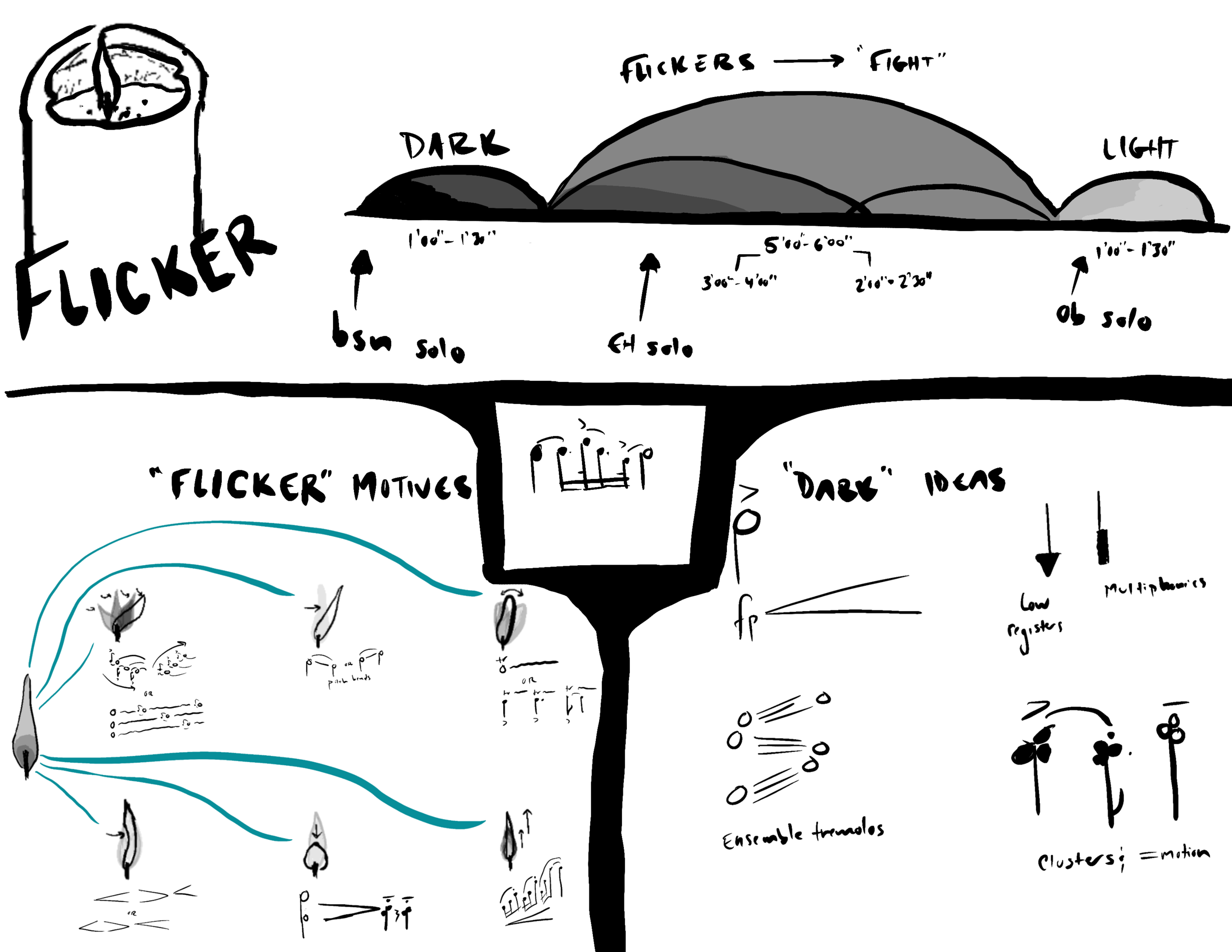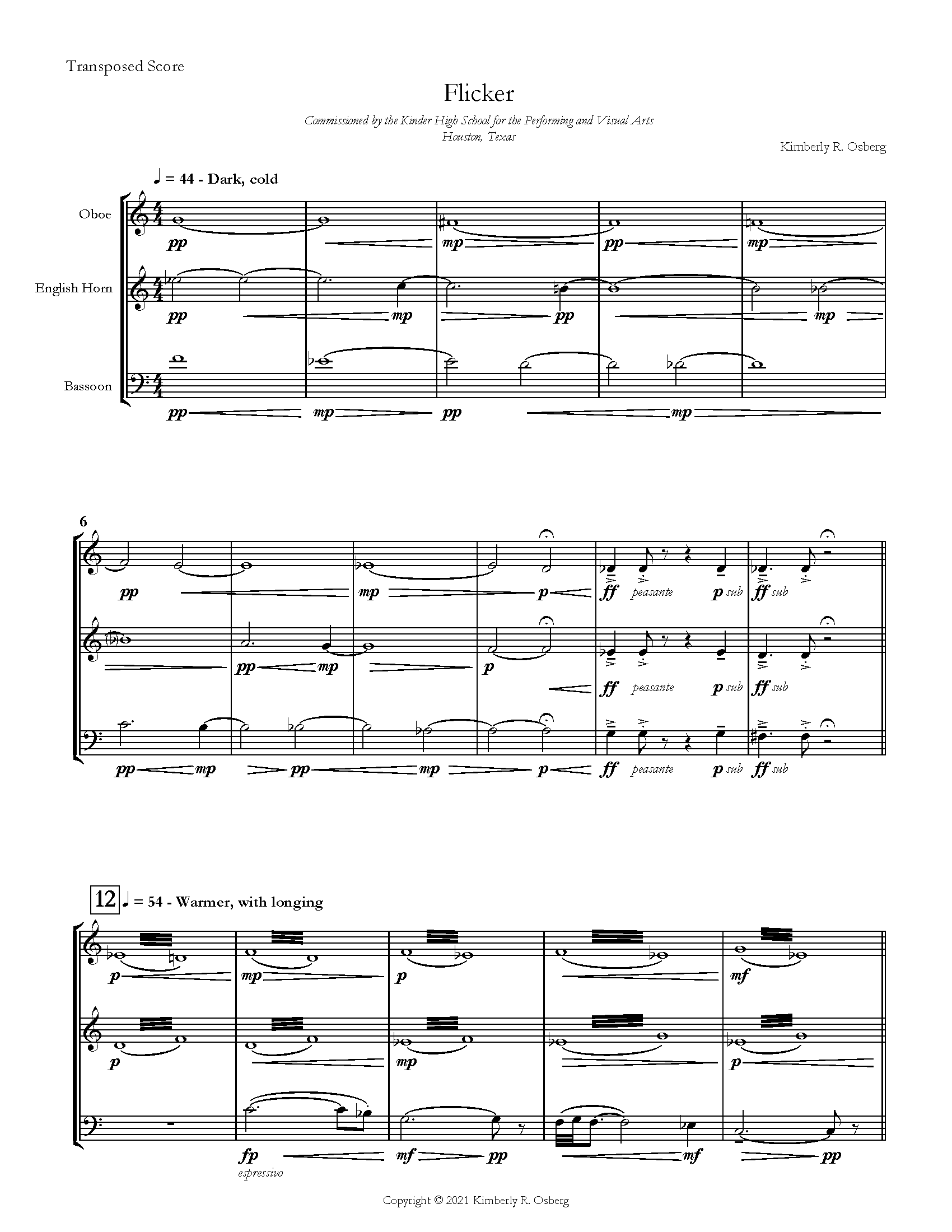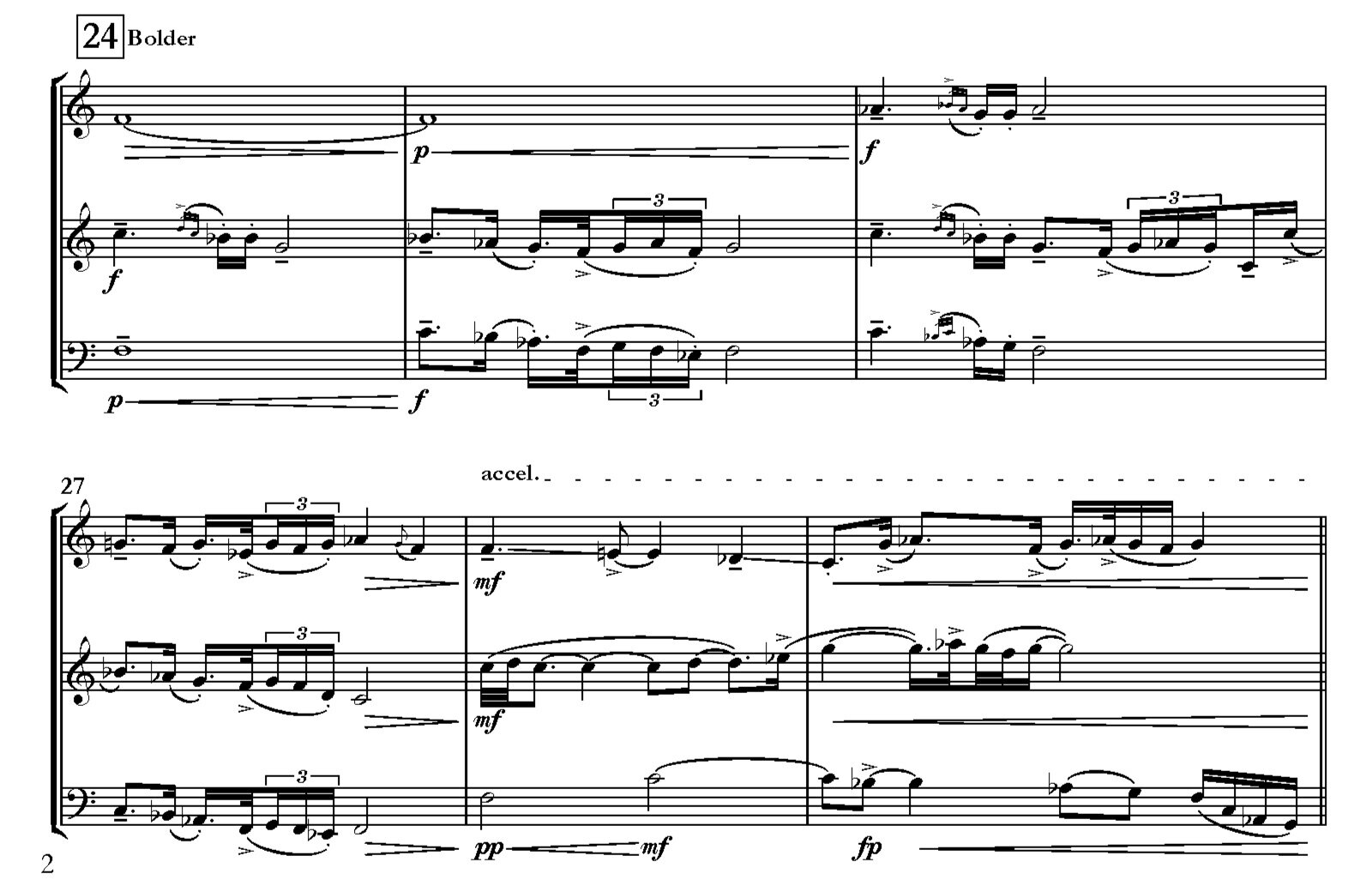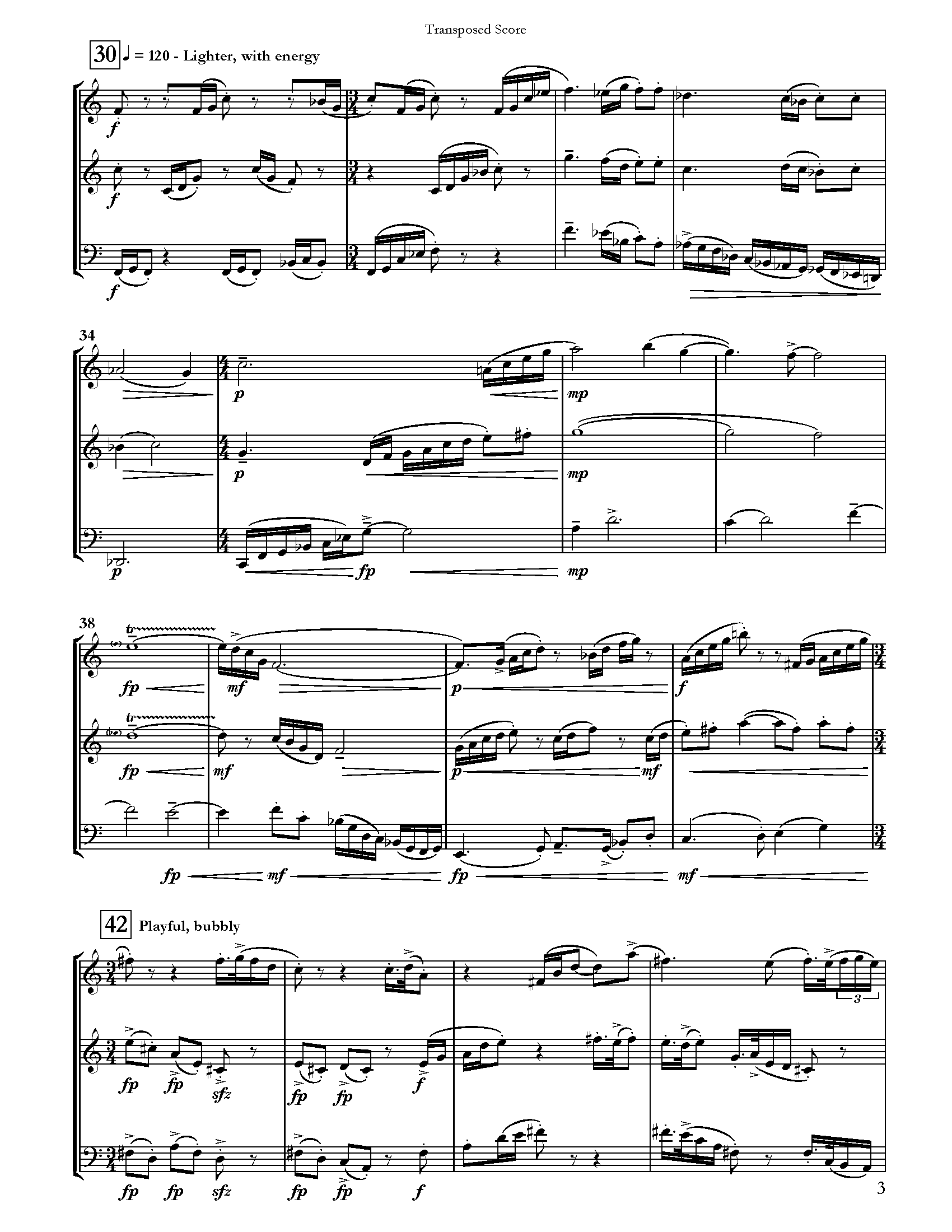Spring Forward: Part Two
Now there are only two projects left in the Spring Forward series - a work for guitar and sax commissioned by the SANS; duo and a substantial work for string trio and a doubling soloist (oboe and bassoon), commissioned by woodwind extraordinaire, Colton Sprenkle. This week, however, I am so excited to share more about the music I just finished for a double reed trio in Texas!
Flicker
Commissioning a slightly longer work, the Kinder High School for the Performing and Visual Arts (HSPVA) in Houston, Texas contacted me to write a showcase piece for their talented double-reed trio. Their ensemble coach expressed how excited she was to have some original repertoire for the group (oboe, English horn, and bassoon), and was particularly hoping to give their bassoonist a non-continuo part!
Meeting the Players
I really enjoyed chatting with the students about what they liked playing on their instruments and what music they listen to outside of classical music. Their oboist was mainly interested in classical and baroque music, but had some interest in folk and experimental styles. The English horn player had a strong affinity for folk styles, particularly Russian music (where she is originally from). Their bassoonist also expressed a strong desire to play a melodic role and said she was into “sad music” like Phoebe Bridgers (this is actually the fourth time this year I’ve worked with a double reed player who was really into Phoebe Bridgers, so if you play a double reed instrument and haven’t heard her music, I guess you have a good chance of liking it)!
All three of them were interested in a piece that was more serious in tone—particularly exploring transitions between darkness and light. They were also interested in having a piece where they each got to play different roles at different times (if you have heard even a single piece of mine, you already know this was never going to be a problem!), and could give them something challenging to work towards. The trio has been performing for three years, so they already had a lot of experience together. I was really excited to write them something which would showcase not only their individual talents, but their ensemble chops as well!
Concept
In thinking about “darkness” and “light,” my mind quickly traveled to candles. I usually keep one (or four) at my desk to light if I’m starting to feel anxious while I’m working. I had one lit the day I was sketching the initial ideas for the piece, and started to become interested in the different ways the flame moved. Sometimes the flame would get very thin and tall—as if an invisible finger had pinched the top to pull it up. Other times the flame would sort of bend in the middle, or flicker suddenly to the side. I started to sketch out these different movements and tried to come up with simple musical gestures that could emulate the movement. For darkness, I tried to find good contrasts—static gestures, crunchy sonorities, and thick textures rather than agile motives and single-lines. Before I knew it, I had the whole piece sketched out and a fun soundbank to work from!
Music
The first section starts in darkness - a closely-voiced chord slowly oozes downward, using subtle dynamic swells and step-wise motion to create an uneasy, cold opening. It took awhile to decide on the harmonies in this section—with the parts being relatively stagnant, each note change feels that much more significant—but after realizing what sonority I wanted to end on, it was easier to work backwards to solidify the voice leading.
The next section uses tremolos and oscillating notes in the upper voices to accompany a slow, sorrowful melody in the bassoon. Planning to give each instrument their own solo, I decided to arrange these features from lowest to highest, which would help further emphasize the gradual triumph of light throughout the work. The cross-fading swells from the opening continue in the accompaniment of this section, increasing in intensity towards to transition into measure 24.
This section develops the opening bassoon melody, adding grace notes and expanding the trill gestures into elaborate, decorative ornamentations. Ideas from this section permeate throughout the work—the first real flickers that will grow into bigger and brighter flames throughout the work. Inspired in part by Russian folksongs, the texture plays with ornamentations over a held note, harmonized tutti movement, and a theme-and-variation style melody. I tend to use modal language when composing my melodies anyway, so while this definitely recalls elements of the Russian folksongs I listened to, it also fits organically within the rest of the work. This weaving texture mixed with sustains and strongly-voice harmonies creates a rich, bold-but-sinuous arrival point for the ensemble.
After this darker melody, a quick transition leads us into the tempo. The melody from the previous section is now framed by ensemble gestures—passing ascending lines quickly up the register before arriving in a series of overlapping sustains (recalling something like church bells). These ricochets give way to a much brighter, bouncier section in which the players pass gestures to one another on a nearly beat-by-beat basis. The section at 30 s mixes sustains in the accompaniment with rests—helping to clear out the ear for the abundance of counterpoint, and prepare for the section at 42 in which a significant portion of the section is drier and shorter. Here also, the dynamic swells are linear rather than circular—building towards the forte in 42, rather than fading in and out below a melody. The harmony here also transitions, moving us from an F pitch center to D. All of these elements work together to create a new momentum, absent from the previous section, and allows the listener to arrive organically with the ensemble in 42. The melodic material here is considerably bouncier and leap-oriented than in previous sections.




